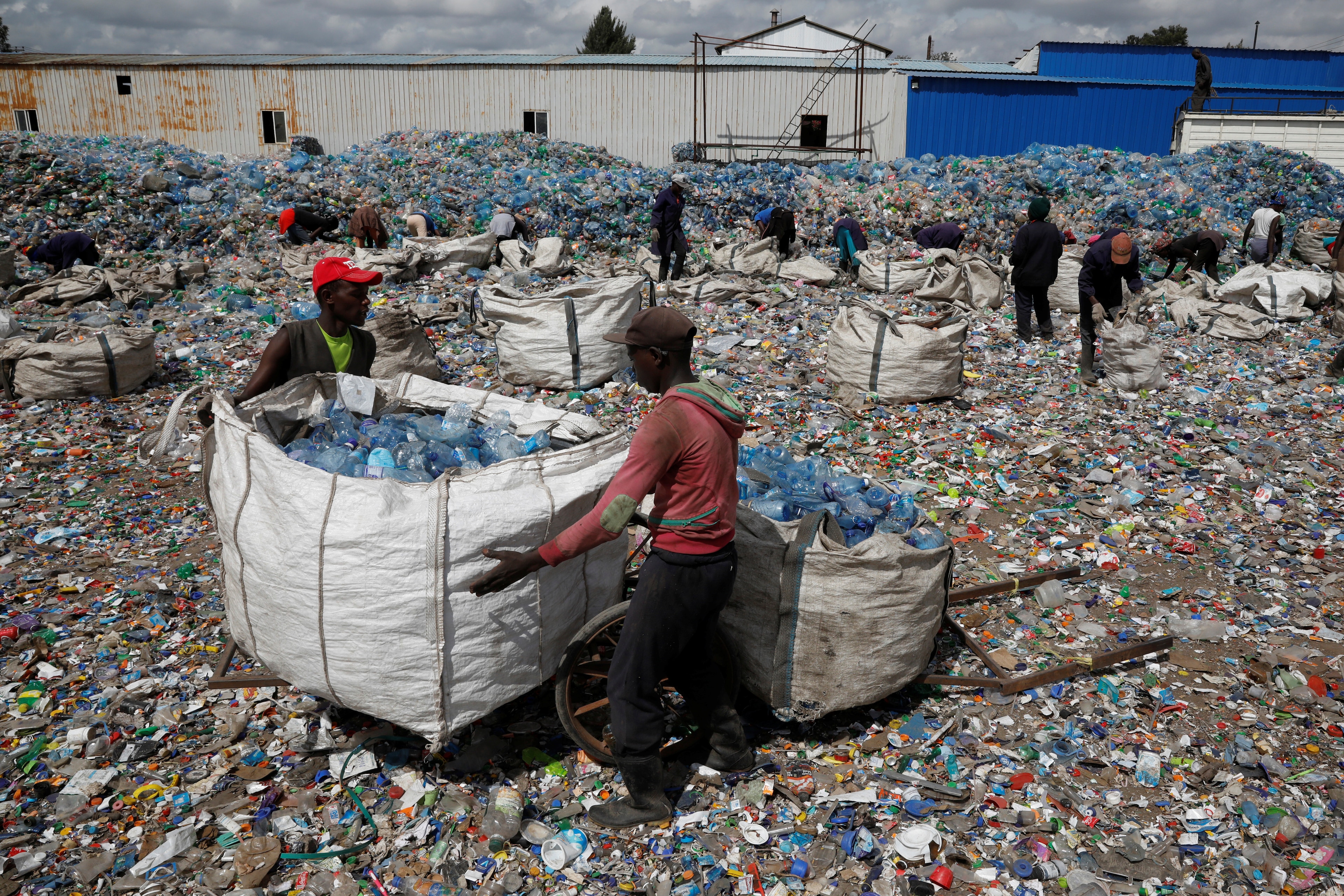These entrepreneurs are turning discarded fishing nets into surfboards and swimwear

Hundreds of thousands of tonnes of fishing gear is lost or dumped in the world’s oceans every year.
Image: REUTERS
Stay up to date:
Restoring ocean life
- Up to 800,000 tonnes of fishing gear is dumped or lost at sea each year.
- 'Ghost nets' kill marine life, destroy habitats and damage fishing boats.
- Fishermen are supplementing earnings by removing ghost nets to sell to recyclers.
- Entrepreneurs are using the recycled materials to make surfboards, basketball nets, jewellery and swimwear.
“Ghost nets” – fishing gear that has been lost or abandoned in our oceans – are a deadly menace for sea life, marine habitats and even the fishermen responsible for putting them there.
It is estimated that between 600,000 and 800,000 tonnes of fishing nets, long lines, fish traps and lobster pots are lost or dumped in the ocean each year, choking coral reefs, entangling fish, marine mammals and seabirds, and catching in boat propellers.
How UpLink is helping to find innovations to solve challenges like this
Some of the abandoned nets can be as big as football pitches and take up to 600 years to break down, shedding microplastics as they degrade. Estimates suggest that more than 100,000 whales, dolphins, seals and turtles get caught and drowned by ghost gear every year.
A handful of entrepreneurs around the world are now finding ways of tackling this ocean scourge and turn them into something new.
In India, fishermen are collecting abandoned nets so they can be turned into eco-friendly surfboards. The fishermen take the nets they have collected to DSM Engineering in Pune, where they are sorted, cleaned and ground into granules. These are then used to make a number of products, including parts for eco-friendly surfboards.
One of the fishermen, Jesuraja, says: “By extracting these nets from the sea, we in a way are cleaning the sea and earning some money. It also helps in enhancing our catch. Usually these nets get stuck in the propeller of the boat and damage our machines when we go fishing."
Elsewhere, ghost nets are being repaired using traditional techniques and turned into volleyball nets. The Good Net project was developed to raise awareness about the problem of ghost fishing gear and has been part of the United Nations Clean Seas programme since 2019. Landor, a branding agency, created the initiative for FIVB, the organization responsible for world volleyball, and Ghost Diving, a marine conservation group previously known as Ghost Fishing.
The nets have been used for a series of volleyball matches around the world, starting on Brazil’s Copacabana beach, to highlight the damage that ghost nets cause to marine life and habitats. The project is supported by the Healthy Seas initiative, World Animal Protection and Greenpeace.
In Pakistan, the Olive Ridley Project (ORP), a turtle rescue charity, has partnered with Seher Mirza, a textile researcher at the Royal College of Arts to reuse ghost gear in creative community projects. In 2009, Mirza set up Threads of the Indus, a development project to work with traditional craftswomen and help them achieve social change within their village communities. ORP provided the project with ghost gear to be developed into accessories that the craftswomen can sell via the project’s creative outlet, S jo accessories.
In the UK, retailer Fourth Element uses nylon recycled from ghost fishing nets and other discarded waste to make swimsuits, wetsuits and rash vests. The recycled yarn is combined with Lycra to create a fabric that Fourth Element says resists damage caused by chlorinated water, heat and sunscreen lotions for up to 10 times longer than unprotected fabrics.
The company also works with a number of organizations, including Reef World and Global Ghost Gear Initiative (GGGI), to help with activities such as beach clean-ups and retrieving ghost fishing nets.
Don't miss any update on this topic
Create a free account and access your personalized content collection with our latest publications and analyses.
License and Republishing
World Economic Forum articles may be republished in accordance with the Creative Commons Attribution-NonCommercial-NoDerivatives 4.0 International Public License, and in accordance with our Terms of Use.
The views expressed in this article are those of the author alone and not the World Economic Forum.
Related topics:
Forum Stories newsletter
Bringing you weekly curated insights and analysis on the global issues that matter.
More on Nature and BiodiversitySee all
Oliver Kade, Sarah Hadley and Judith Ketelslegers
July 28, 2025
Nasim Pour, Sebastien Cross and Joel Gould
July 28, 2025
Elena Raevskikh and Giovanna Di Mauro
July 23, 2025
Arunabha Ghosh and Jane Nelson
July 22, 2025
Sebastian Buckup and Beth Bovis
July 10, 2025






